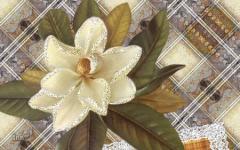Big choice
——————————————————————————————————
Brief description of pesticides.
When using pesticides, it is very important to use preparations of different chemical classes to prevent the emergence of resistant pest populations.
In general, fungicides that are effective against ascomycetes (this class includes powdery mildew) are effective against many other pathogens, but are less effective against diseases caused by oomycetes (this class includes downy mildew). Fungicides effective against oomycetes are also effective against other pathogens of many diseases, but less effective against diseases caused by ascomycetes.
Therefore, many fungicides are combined, i.e. they contain several active ingredients.
Class of fungicides Triazoles: They are characterized by systemic, long enough and wide spectrum of action. The preparations have an acropetal effect, i.e., they are able to move behind the growth point of the plant, providing protection for young growing organs. Absorbed quickly by foliage. Not phytotoxic at recommended application rates. They are used against powdery mildew, rot, rust, net blotch, scab, septoria, cercosporellosis, rhynchosporium oidium, gray rot .. I recommend Skor.
1) Speed, Split, difenoconazole
2) Topaz, penconazole
3) Impact, Wincit. flutriafol
4) Vectra, bromuconazole
5) Bayleton, Tosonite, triadimefon
6) Vial, dinconazole
7) Lospel, tetraconazole
8) Real. Premis25, triticonazole
9) Raxil, Terrasil tebuconazole
10) Tilt, propiconazole
11) Sumi8, diniconazole
12) Falcon, combined fungicide (a.v. tebuconazole, triadimenol, spiroxamine)
13) Folicour, combined fd. tebuconazole, triadimefon
14) Shavit, combined f-d (a.v. triadimenol, folpet)
15) Rex, Allegro Plus epoxiconazole
16) Bumper, propiconazole
17) Alto, cyproconazole and propiconazole
Fungicide class Benzimidazoles. Effective against powdery mildew, cercosporellosis, fusarium root rot, gray and white rot, fusarium wilt, ascochitosis, snow mold, dusty and hard smut, rhizoctoniosis, blast, phomosis, anthracnose.
They have a systemic effect. Low toxicity to humans. I recommend using the 0.2% substrate irrigation method. well absorbed through root system and carried up the vascular system. Not phytotoxic, i.e. do not burn plants. It can also be used as a seed dresser with a 2% suspension. The best fungicides for controlling root rot. I recommend Benlat or Fundazol.
1) Pherazaim, Terminator. Carbendazim, Derozal. Stefazal, Bavemtin, BMK
2) Benlat. Fundazol. Agrocyte, benomyl
3) Vial, Vincit, Tecto, thiabendazole
Class of fungicides Strobilurins - systemic, immunostimulating action. Used against powdery mildew, rot, rust, scab, peronosporosis, late blight, mildew, and other blotches. Almost all phytopathogens of fungal origin fall into the zone of action of this group of drugs. Strobilurins destroy fungi of 4 classes: oomycetes, ascomycetes, basidiomycetes and deuteromycetes. They have an acropetal effect, i.e. they are able to move behind the growth point of the plant, providing protection for young growing organs. Resistant to temperature extremes, quickly penetrate the plant, providing long-term protection. Ideal as a preventive treatment against plant diseases. I recommend Flint.
1) Strobi, kresoxim-methyl
2) Flint, trifloxystrobin
3) Quadris, azoxystrobin
4) Cabrio Top, piaclostrobin
Class of fungicides Hydroxyanilides: A fairly new group.
1) Teldor, fenhexamid, is the best fungicide to combat sulfur and monilial rot, powdery mildew. Non-phytotoxic, harmless to humans and environment. Great for flower processing. Contact long-term action.
Class of fungicides Carbamates - have a systemic effect. Can be used by watering the substrate. Penetrate through the roots and spread up the vascular system.
1) Previkur, propamocarb, - systemic and stimulating action, a wide spectrum of action against oomycetes. (stem and root rot, downy mildew fungi)
2) Tattoo, propamocarb
3) Topsin-M, thiophanate methyl. Effective against powdery mildew, scab, moniliosis, cercosporosis.
4) Fundazol, Benlat, benomyl, Agrocyte.
Class of fungicides Derivatives of piperazine. Protective and healing action.
Class of fungicides Pyrimidamines. Systemic or limited systemic action. Used against scab, powdery mildew, moniliosis.
1) Rubigan
2) Milgo, etirimol
3) Chorus, cyprodinil
Fungicide class Imidazoles - effective against powdery mildew fungi
2) Sportak
3) Trifmin
Class of fungicides derived from hydroxycarboxylic acids - systemic action
1) Vitavax. Carboxin. Systemic seed treater.
Class of fungicides Dithiocarbamates Contact action. Therefore, they are most often used in a mixture with other active ingredients. Effective only as an intermediate or last treatment of plants.
1) Polycarbacin, polyram, metiram
2) Ditan, mancozeb
3) Antracol, propineb, zinc-containing. Fungicide with bactericidal properties.
4) Acrobat (mancozeb - complex maneba i cineba)
5) Tattoo, combined f-d,. mancozeb (second a.i. propamocarb)
6) Ridomil-Gold combined f-d, mancozeb (second a.i. metalaxyl)
7) Cabrio Top, metiram
Acetamides: and oxazolidine derivatives
1) Thanos. Combined f-d. (cymoxanil, famoxadone) - effective against late blight, Alternaria, mildew.
Class of fungicides derivatives of amino acids. Phenylamides. Effective against downy mildew fungi. system action. Apply no more than once per season.
1) Metalaxil, Ridomil.
4) Creptan
5) Sandofan
6) Arceride
7) Maxim, metalaxyl-M
Class of fungicides fluorine-containing pyrol derivatives
1) Maxim, fludioxonil.
Class of fungicides Organophosphorus - effective against powdery mildew fungi
Afugan - effective against powdery mildew fungi.
With the active substance aluminum fosethyl.
Effective against downy mildew fungi. system action.
1) Allett, aluminum fosetil
Class of fungicides Morpholines:
1) Acrobat MC (dimethomorph)
2) Allegro Plus combined fd. (fenpropimorph)
3) Fademorph, (trimorphamide)
Fungicide class Aromatic oximes:
1) Alegro plus, kresoxim-methyl
Dithiana class of fungicides:
1) Delan, dithianon
Insecticides - chemicals used to kill insects.
Insecticide class Pyrethroids. They are characterized by fast continuous action, high efficiency and low toxicity for warm-blooded animals. Decompose rapidly in the external environment. They have a big drawback - addiction (resistance) in destroyed organisms to this class of compounds after several repeated applications. Low consumption rate. Preferably mixed with insecticides systemic action or hormonal. I recommend Caesar.
1) Fastak, Alfagard, alpha-cypermethrin
2) Talstar, Caesar. Semaphore, Bifenthrin - insectoacaricide
3) Sherpa, Arrivo, Intavir, Tsimbush, cypermethrin
4) Fury, Zeta-cypermethrin
5) Decis, delta metrin
6) Karate. lambda cypermethrin
7) Sumi alpha
8) Kinmiks, beta-cypermethrin
9) Vantex; gammacyhalothrin
Thiourea Insecticide Class:
Pegasus - insectoacaricide, limited systemic, fumigation, ovicidal action. Broad spectrum, low toxicity to humans.
Class of insecticides Phosphorusorganic. They are characterized by a limited systemic wide spectrum of action. I do not recommend using due to the high toxicity to humans. In exceptional cases, I recommend Aktellik.
1) Actellik, pyrimiphos-methyl, - insectoacaricide
2) Sumition, fenitration, ovadofos, metathion
3) Zolon. Fozalon. Benzophosphate. - insectoacaricide
4) NurelD, Pirinex, Dursban, Matador; Chlorpyrifos is the strongest of the combined organophosphate insectoacaricides, but is very toxic to humans.
5) Bazudin. Diazinon. Diazol, Grom-2, Gromoboy, Bunchuk, Medvedox. - can be used to control soil pests.
6) Bi-58- Dimethoate. Rogor-S, Dimetrin, Accent, Pilarmax, Danadim - insectoacaricide
7) Fufanon - Phosbecid, Karbofos, Malathion - insectoacaricide.
8) Vofatox, Phosphamide, Parathionmethyl, Parachute, methylparathion.- is used to combat soil-dwelling insects.
9) Volaton, foxim
10) Bolstar, sulprofos
11) Selecon, profenofos
12) Phtalofos, fosmed
13) Chlorophos, trichlorfon
14) Hostaquik, heptenophos
15) Cyanox, cyanophos
16) Ekamet, etrymphos
Class of insecticides Neurotoxins. They are characterized by a wide spectrum of action, low consumption. Virtually non-toxic to humans. Can be used for root and foliar processing. I recommend Mospilan, Confidor Maxi.
Neonicotinoids: systemic action
1) Aktara, Krutzer, thiamethoxam, (oxadiazines)
2) Confidor, Leader, Vital, Antizhuk, Warrant, Zeus, Zenith, Ratibor, Tanrek, Gaucho; imidacloprid. (Imidazoles)
3) Prestige, imidacloprid (Imidazoles)
4) Calypso, thiacloprid, (Cyanamides)
5) Mospilan, acetamiprid, (acetamides)
6) Dantop, Ponche, Apaches (guanidine derivatives)
Nicotinoids: contact-intestinal action.
6) Regent, fipronil, (Phenylpyrazoles) - continuous contact-intestinal action, very low consumption rate.
7) Bankol, bensultap, (derivatives of sulfonic acid) contact-intestinal action.
Class of insecticides Hormonal.
Chitin synthesis and growth inhibitors: Practically harmless to the environment. Narrow selective spectrum of action. They also have an ovicidal effect. Do not kill adults, but sterilize them. Can be used in conjunction with pyrethroids or neurotoxins.
1) Insegar, fenoxycarb (carbamates)
2) Dimilin, diflubenzuron
3) Match, lufenuron
4) Sonnet. hexaflumuron
5) Nomolt-teflubenzuron
6) Appleud. buprofezin is the first insecticide for whitefly control.
7) Rimon, novaluron.
Insecticide class Avermectins: Low human toxicity, broad spectrum, low pest resistance. They have insecticidal, acaricidal and nematocidal activity. I recommend Vermitek.
1) Vermitek, abamectin.
2) Aktofit
3) Fitoverm, aversectin.
4) Agravertin, Akarin
Insecticide class carbamates. system action. High insecticidal acaricidal and nematicidal activity. Highly toxic.
1) Carbofuran
2) Marshal, Carbosulfan
A class of spirocyclic phenyl substituted tetronic acids.
1) Oberon. JUDO, (Spiromesifen) Effective against thrips of many other insects and mites. translaminar action plus ovicidal inhibitor (LBI). lipid biosynthesis.
2) Kontos, Movento, (Spirotetramat). In addition to translaminar drugs, these preparations also have good systemic properties, but poor contact properties. Therefore, they are mainly effective against sucking pests (aphids, mealybugs, mites, whiteflies)
3) Envidor (spirodiclofen)
Acaricides are chemicals used to kill ticks. All acaricides have contact action. The systemic properties of drugs do not yet have a good enough effect. Therefore, quality processing is very important. If proper spraying is not possible, I recommend using preparations with fumigant properties.
For emergencies Omite.
2) Sunmite, Taurus, pyridaben (Diazines) continuous action. Excellent eradicating properties. Low toxicity. I do not recommend using more than once a year. The pest very quickly creates stable populations.
3) Neoron., Bromopropylate - continuous action
5) Neoron., Bromopropylate - continuous action
6) Apollo, clofentezin - An excellent hormonal acaricide against spider mites, non-toxic to humans. Destroys eggs, larvae. Does not affect adults, but sterilizes them. The longest period of protection.
7) Borneo, Borneo (Etoxazole)
Hormonal acaricide. Recommended against spider mites, Tetranychus and Panonychus
8) Nissoran, hexythiazox (carboxamides) - Hormonal drug. Wide spectrum of action. Low toxicity. Destroys eggs, larvae, nymphs. Does not affect adults, but sterilizes them.
9) Borneo, Borneo (Etoxazole)
Hormonal acaricide. Recommended against spider mites, Tetranychus and Panonychus.
10) Mitak, amitraz. Insectoacaricide. Wide spectrum of action. Effective acaricide.
11) Demitan, Magus, phenazaksin. Insectoacaricide. - a wide range of activities. Low toxicity.
12) Ortus. Kiron (fenpyroximate), a class of pyrazoles. Wide spectrum of action. Small consumption rate. Low toxicity.
13) Masai, Piranika. (tebufenpyrad) Class of pyrazoles. Wide spectrum of action. Small consumption rate. Low toxicity.
14) Oberon. JUDO, (Spiromesifen)
It has good insecticidal activity against whiteflies and side effects against thrips, a very wide acaricidal spectrum of action.
1) Thiovit Jet
2) Cumulus,
3) Colloidal sulfur
1) Kuproksat
2) Medyan Extra and others.
4) Champion
5) Kuprosil
6) Blue Bordeaux
8) Copper oxychloride
9) Bordeaux mixture
Moluscicides are chemicals used to kill mollusks and slugs.
1) Metaldehyde - Granules are laid out on the surface of the substrate or soil.
Thiadiazine class:
1) Bazamid Granulate, dazomet, thiazon. soil sterilizer. Continuous nematocidal, fungicidal, herbicidal insecticidal action, phytotoxic.
Next, I list the drugs that can be seen on sale in the markets, which are potent substances (SDYAV). The sale of these drugs (often expired or taken from chemical burials) is illegal and poses a great danger to the gullible buyer.
1) Organophosphate nematocides such as Heterophos, Etaphos, Miral, Isazophos, etc.
2) Used for dressing seeds in factories. carbamate group. The active substance is carbofuran. Such as Carbation, Furadan, Hinufur, etc.
3) Organochlorine - I don’t know where they are dug up, but there are DDT, HCCH, Chlorophenolates, etc.
4) Zinc phosphide.
5) Preparations used for disinfection of storage facilities. Fostek. Fostoksin, Foscom. Mastoxin, D.V. - aluminum phosphide. And based on the d.v. magnesium phosphide.
Attention!
Do not buy anything in spontaneous markets from your hands and in dubious stalls.
80% of all products are at best expired, of poor quality, at worst - not at all what is written on the label. With the existence of modern printing equipment, all these holograms, etc. - not a problem for shadow packers. After all, the packaging may contain very toxic substances. Also, with prolonged or improper storage, many drugs decompose into even more toxic compounds. The use of dubious drugs can irreparably harm your health.
Try to buy only in stores that are representatives of manufacturers.
A few rules for the use of pesticides:
All pesticides have a cumulative carcinogenic, immunosuppressive effect to varying degrees. Therefore, do not neglect safety measures, because a negative effect on health can only appear after a while.
First of all, you need to use at least a respirator, because the fastest absorption into the blood occurs through the lungs, bypassing the liver barrier. You can not drink alcohol at the time of even the slightest ingestion of pesticides in the body. Under the influence of many substances, alcohol turns into poisonous acetaldehyde. Do not underestimate the toxicity of biological pesticides. They also have carcinogenic and immunosuppressive effects.
From my own experience, milk, vitamin E and a bath (sauna) have the best detoxifying effect.
Toxicity of pest control products, especially in apartments and other residential areas.
The second most important indicator, and sometimes the first, especially for enclosed spaces, is the volatility of the drug. Penetrating into the lungs of a person, pesticides are immediately absorbed into the bloodstream, bypassing the liver barrier, spread throughout the body, immediately poison the brain, and others. internal organs. Every substance, even solids, can evaporate. And the main indicator is the vapor pressure. I won’t bother you with physics, I’ll say right away that the lower this indicator, the less volatility, and therefore the harmfulness of the drug for the lungs.
Vapor pressure is usually measured in Pa at 20°C.
The larger the number to the power of 10- * degree - the less volatility.
That is, 1.0 10-2 is ten times more toxic than 1.0 10-3
At vapor pressure:
up to 1 10-2 evaporate very well, have good fumigation properties
up to 1 10-3 evaporate well, have moderate fumigation properties.
up to 1 10-4 do not evaporate well
up to 1 10-5 almost do not evaporate
up to 1 10-6 it can be said that they practically do not evaporate.
Fipronil, regent
Vapor pressure less than 1 10-6 Pa at 20 C
Bromopropylate, neoron
Vapor pressure 6.8 10-6 Pa at 20 C
Decis, cypermethrin
Vapor pressure less than 1 10-6 Pa at 25 C
Diazinon, bazudin.
Vapor pressure 1.9 10-2 Pa at 20 C
Dimethoate, BI-58
Vapor pressure 1.13 10-5 Pa at 20 C
Karbofos, malathion.
Vapor pressure 1.67 10-2 Pa at 20 C
Parathionmethyl (vofatox, metaphos, parachute)
Vapor pressure 1.3 10-3 Pa at 20 C
Actellik, pyrimiphos methyl.
Vapor pressure 1.3 10-2 Pa at 20 C
Omite, Propargit
Vapor pressure 4 10-2 Pa at 20 C
Chlorpyrifos, Nurel-D
Vapor pressure 2.5 10-3 Pa at 25 C
Sunmite, pyridaben
Nissoran, hexathiazox.
Vapor pressure 3.4 10-6 Pa at 20 C
Permethrin
Vapor pressure 4.5 10-5 Pa at 25 C
Actara, thiacloprid
Vapor pressure less than 1 10-6 Pa at 20°С
Confidor, imidacloprid
Vapor pressure less than 1 10-6 Pa at 20°С
Mospilan, Acetamiprid
Vapor pressure less than 1 10-6 Pa at 20 C
Avermectins
Vapor pressure less than 1 10-6 Pa at 20 C
Spirodiclofen, Envidor; spiromesifen, Judo, Oberon, JUDO
Vapor pressure less than 1 10-5 Pa at 20 C
Carbosulfan, Marshal.
Vapor pressure 4.1 10-5 Pa at 25 C. But! Its decomposition product carbofuran is a hundred times more toxic and has a vapor pressure of 2.7 10-3 at 33°C. Evaporates well! Has a half-life of a month! Very persistent and toxic substance.
Surely you know that fungal diseases are the most insidious and dangerous for vegetable and berry crops, capable of causing serious damage to future crops. Therefore, various means are needed to combat this scourge. This article will focus on modern biological preparations that are able to fight certain fungal diseases of our cultivated plants. Why was this topic chosen? The fact is that even a very small part of summer residents use biological products. Preference is given to chemistry, but in vain ...
Several favorable conditions are necessary for the occurrence of a mass infection by a fungal disease of plants. Need cool, cloudy weather. It is also desirable that the rains are constant and long. And the plants should be bushed or grow in the shade. It is these weather conditions that allow fungal infections to infect a large number of your beds and shrubs.
There are many chemicals for the prevention of fungal diseases. The most famous to many is called the Bordeaux mixture. A 1-3% aqueous solution of copper sulphate is also often used. In some cases, such processing saves a large number of berries and fruits. However, it is insufficient if the above combination of weather factors occurs. In these cases, serious comprehensive support is required.
Of course, you can use modern chemicals to combat and prevent fungal diseases. Some of them are very serious poisons, the spraying of which must be carried out in chemical protection. In addition, this will negatively affect your crop - in any case, some part of these hazardous substances will get into it.
What is the right thing to do in this matter? The way out of this situation can be the use of modern drugs on a biological basis. They act narrowly, without harming plants and your health. They do not contain poison. They can be used many times during one season to process plants and due to this, get an excellent harvest.
The advantage of biofungicides is their environmental safety. Most of them do not have a waiting period. This term means that their use is also permissible during the period of fruit ripening. The disadvantages include limited time (they quickly lose their properties in air). Therefore, it is necessary to apply them several times during the season so that the effect is noticeable.
Modern types of biofungicides based on fungi
Fungicides are called the whole range of drugs to combat fungal diseases. Biofungicides based on fungi are called deuteromycetes. The principle of their action is based on the inhibition of harmful fungi, i.e., in the penetration into their mycelium and the destruction of the fungus, which inhibits the spread of the disease. In fact, fungal diseases are treated with other mushrooms. Of course, in such preparations one or another type of fungi that is safe for humans and insects is used.
Biofungicide "Ampelomycin"
A biological drug called Ampelomycin is based on the fungus Ampelomyces quisqualis. Mostly used by gardeners against powdery mildew.
Biofungicide "Gliocladin"
Gliocladin is derived from the mushroom Gliocladium virens. Effective against root rot.
Biofungicide "Koniotirin"
Coniothirin is made from the fungus Conio-thyrium minitans. Well used against white and gray rot.
Biofungicide "Mikosan"
Allows you to protect fruit and vegetable crops from fungi, bacteria and viruses. The mechanism of action is based on the penetration of fungi into plant cells and the destruction of cells affected by pathogens with pathogens.
The active substance "Mikosan" was isolated from the cells of the fungus of the genus Trutovik. It penetrates into the cell tissues of plants and stimulates the formation of enzymes in plants. They have the ability to destroy the cell membranes of phytopathogenic fungi.
It can be effectively used during the fruiting period. Useful properties so many:
Enhancement of plant immunity Improvement of mineral nutrition of plants Safe for humans, insects and animals Helps to increase the activity of subsoil microorganisms
The drug provides a high and long-lasting protective reaction of plants against a wide range of diseases, increases the resistance of plants to adverse climatic conditions.
The high biological activity of the fungus allows it to quickly master the substrate, and begin to actively help decompose organic compounds, accelerates the processes of ammonification and nitrification, enriches the soil with mobile forms of nutrients.
Biologically active substances Excreted by Trichoderma lignorum in a certain concentration stimulate the development of plants, increasing their resistance to diseases.
Modern types of biofungicides based on bacteria
The basis of such biological products contains strains of certain bacteria that are safe for humans, but well inhibit fungi and their spores. More versatile in use than deuteromycetes, and have a longer duration of action.
Biofungicide "Alirin-B"
The basis of the drug is Bacillus subtilis bacteria isolated from zoocompost. The strain has a high antagonistic activity for a wide range of phytopathogenic fungi, bacteria - pathogens of agricultural crops.

It is a yellow-brown liquid. Each gram contains 1 billion live bacterial cells and spores, which have medicinal properties. Able to suppress pathogens of grain crops, sah. beets, potatoes, etc.
Alirin-B has growth-stimulating properties, promotes the development of a powerful root system, resistance to lodging and provides an increase in yield.

Biofungicide "Albit"
Contact biological fungicide and stimulant that can be used for pre-sowing seed treatment and after vegetation (together with pesticides). Especially effective is the treatment of winter grain crops during the growing season in the tillering stage together with herbicides. Multiple use of the drug allows you to increase the grain yield by 10-35%.

Biological preparation for combating diseases of vegetable and flower crops. Bactofit is a biological preparation for combating fungal and bacterial diseases of grain, vegetable, fruit and berry crops, diseases of flowers and medicinal plants. Baktofit is intended for processing seeds and tubers before planting, the root system.
Biofungicide "Elena"
The basis of this biological product are microorganisms isolated from the soil in the Republic of Bashkortostan. According to the manufacturer, it gives an increase and acceleration of productivity up to 50%. Harmless to humans, bees, fish, birds.

Biofungicide "Fitolavin"
Biological preparation for combating bacterial and fungal diseases of vegetable and fruit crops. It is a systemic biological bactericide. The active substance is phytobacteriomycin (a complex of streptothricin antibiotics). Used to prevent most fungal diseases. It has a bactericidal and fungicidal effect. Not phytotoxic, does not destroy animals and plants.

Perhaps one of the most popular bacterial fungicides, which summer residents often use. Ecologically safe fungicide based on friendly natural bacterial culture Bacillus subtilis 26 D, 100 million cells/g. on a humic carrier. Effective in use against a wide range of fungal and bacterial diseases, including scab, wilt, blackleg, late blight, seed mold, root rot, seedling rot, powdery mildew, leaf rust, loose smut, blister smut, Alternaria, Rhizoctonia, Fusarium , septoria and many others.
"Fitosporin-M" is effectively used by summer residents against powdery mildew, helminthosporium root rot, brown rust, rhizoctoniosis, alternariosis, phomosis, late blight, snow mold, scab, fruit rot, white spotting, rusty spotting, etc. In addition, the drug contains immunostimulating and anti-stress substances that significantly reduce the risk of re-infection and increase growth.
The above preparations are far from all biological preparations used in the Russian Federation, used in the fight against a wide list of fungal plant diseases. There are many licensed and certified drugs, which you will learn about in our new materials.
Beginners, and already experienced gardeners, need to know how to treat trees from diseases.
They want to know about fungicides, not diseases. Let's leave scab, powdery mildew, alternaria, sooty fungus and gnawing-sucking alone for now, we'll treat knowing what, but not knowing why ... As you say ...
Fungicides against fungal diseases
Fungicides, drugs for diseases, are divided into:
- contact - protective, from fresh fallen spores and burning spores that did not have time to grow;
- contact - with a healing effect, which affect already germinating spores of fungi, they also include strobilurins with mesosystemic action (penetrates through the leaf, but does not move throughout the plant);
- systemic- able to move around the plant and kill the pathogen from the inside, i.e. heals the plant.
Today, tank mixtures of contact and systemic fungicides are made so that there is no resistance (addiction), because. after a systemic preparation, the pathogen has a chance to survive and give offspring, then with a contact preparation this chance is practically reduced to zero.
Contact fungicides
These include: "Bordeaux mixture", "Khom", "Oksihom", "Abiga-peak", blue vitriol. They work against a whole armada of pathogenic fungi, moreover, they have a high bactericidal effect against bark diseases (black bacteriosis, bacterial burn, moniliosis, scab, green algae and lichens). Allowed in LPH.
The toxic content of copper in human blood is 5.4 mg/l. The main site of its deposition is the liver. Excreted from the body 90% through the intestines, 10% through the kidneys.
Signs of poisoning: metallic taste in the mouth, nausea, green vomiting, tachycardia, salivation, diarrhea, headache, fever, convulsions. Characteristic for this poisoning is the appearance of jaundice and anemia. Having sniffed such a powder, "metal copper fever" begins - chills, dry cough, lacrimation. thirst, pain and tightness in the chest. In case of an overdose, the skin of the face turns green-black.
In Russia, there is an opinion that this is not chemistry, but environmentally friendly processing.
I urge everyone to follow safety precautions! Work in gloves, in bandages on the face, use glasses.
Reminder! Copper sulfate is not used on a vegetative plant - you will burn them. On vegetative plants, "Bordeaux mixture", "Khom", "Abiga-peak" are used. Copper-containing preparations are somewhat toxic to plants and experience "copper shock".
Sulfur
Sulfur-based preparations: Cumulus DF, Thiovit Jet, colloidal sulfur. Colloidal sulfur is allowed in household plots.
They are contact fungicides with a protective and curative effect. They are used in dry and warm weather, not lower than 22 degrees. Used against powdery mildew and scab, rust. The drugs work for one day. Hazard class 3.
Quinon class
This drug is based on the first antimalarial drug. "Delan" - the active ingredient is dithianon, a contact fungicide with a protective effect. In the Russian Federation, it is registered against scab on apple trees. In Belarus, it is registered from monilia to stone fruits. The drug is not phytotoxic. It is used in combination with strobilurins by colors from a complex of diseases. Not compatible with sulfur and containing oils. The beauty of this drug is its rapid decontamination, which makes it possible to use on ripening fruits. Not allowed in LPH. Hazard class 3.
Derivatives of dithiocarbamic acids
"Polyram DF" - the active ingredient is metiram. Contact preparation with a protective and healing effect. In the Russian Federation, it is registered on pear and apple trees against scab, rust, leaf spot, sooty fungus, "flycat", gray rot. According to my observations, it is somewhat phytotoxic for pears, but for stone fruits it is quite relevant; on cow infections and moniliosis does not work. Used 50 days before harvest.
Signs of poisoning: inhibition of erythrocyte enzymes, inhibits the activity of sodium and potassium ions.
Visible symptoms: increased bronchial secretion, salivation, lacrimation, pupillary constriction, bronchospasm, involuntary twitching of muscle fibers, tachycardia, damage to the central nervous system: anxiety, depression of consciousness, respiratory center, in severe cases, convulsions and coma.
Some preparations from this group are used on tomatoes and potatoes. Hazard class 3.
Strobilurins
These include: "Zato" - the active substance trifloxystrobin and "Strobi" - the active substance krezoxyl-methyl. Contact fungicides with a long protective effect of mesosystemic action. Resistant to precipitation. Without tank mixes, resistance can develop!
Compatible with almost all pesticides, foliar dressings and other fungicides. Recommended in the Russian Federation: "Strobi" - scab, powdery mildew, black fungus. "flycat", alternariosis, leaf spot, fruit rot during storage (moniliose, penicillosis, bitter, moldy). Hazard class 3.
Permission to LPH remains open. The beauty of the drug is that it can be used in the last stage of fruit ripening. On grapes does not affect the fermentation of wine. According to my observations, it is practically not active from moniliosis by color, only when mixed with Delan it gives an effect.
IN useful tips In the fight against common plant diseases, you must have come across the mysterious word "fungicides". We will tell you what these drugs are and how to use them in the garden, vegetable garden and flower garden.
The word "fungicide" is derived from the Latin words "fungus" (translated as mushroom) and "caedo" (kill). So, it is easy to guess that a fungicide is a substance (of chemical or biological origin) that inhibits the development of fungi.
Fungi are the causative agents of many diseases that affect plants. Therefore, in order to protect green pets, it is often necessary to use fungicidal substances in the garden and vegetable garden. But how to understand their diversity and choose the right pesticide?
Types of fungicides
Fungicidal substances are divided into groups. Depending on the chemical properties they are:
- inorganic(compounds of sulfur, copper, mercury, nickel, iron, manganese and potassium);
- organic(decompose under the action of living organisms and do not contain heavy metals).
The advantage of organic fungicides over inorganic ones is that the former do not contain metals. In addition, it is very simple to prepare solutions of such preparations: you need to dilute the fungicide in water. And yet these substances can be combined with many pesticides, and inorganic fungicides are not compatible with all drugs.
But at the same time, organic fungicides are short-lived substances that remain in the soil for only a few days to a few weeks, and then break down.
Depending on the action on the pathogen fungicides are divided into:
- preventive or protective(prevent infection of the plant);
- curative or curative(cause the death of fungi after infection of the plant).
Most fungicides are prophylactic
By purpose of application fungicidal substances are divided into:
- seed dressers;
- preparations for tillage;
- preparations for processing plants during the dormant period;
- fungicides for processing during the growing season;
- preparations for spraying and fumigation of storages of grain and vegetables.
But for the convenience of gardeners today they produce a lot of universal fungicides: the same drug is suitable for dressing seeds and for tilling soil and plants throughout the growing season.
depending on x distribution patterns within plant tissues allocate:
- contact, or local, fungicides (remain on the surface of plants and cause the death of the pathogen upon contact with it. Their effectiveness depends on many factors: the duration of action, the amount of fungicide, chemical resistance, weather conditions, etc.);
- systemic, or intraplant(spread through the vascular system of plants and suppress the development of the pathogen. Their effectiveness is determined by the rate of penetration into plant tissues and almost does not depend on weather conditions).
Some contact fungicides have a deep action: they are able to penetrate the outer shells of the seeds.
Also, all fungicides can be divided into two groups:
- Chemical(active substance - chemical compound);
- Biological(the active substance is beneficial bacteria that cause the death of pathogenic fungi).
The advantage of biofungicides is that they are characterized by low toxicity. Therefore, recently they are gaining more and more popularity among summer residents.

Popular biofungicides
Application of fungicides
Fungicides are used in several ways.
- Etching. Seeds and tubers of plants are treated with a fungicide (dry powder or preparation dissolved in water) before sowing / planting.
- Spraying and dusting. The aerial parts of plants are treated with a fungicide solution using sprayers. Often, spraying is carried out several times per season: as a rule, in early spring and late autumn. Also, greenhouses and storage facilities are often treated in this way.
- Incorporation into the soil. Fungicides in the form of a powder are applied to the soil during digging, and the soil is shed with preparations dissolved in water. Thanks to this, pathogenic fungi living in the ground are destroyed.
List of effective fungicides
| Name of the drug | Active substance | Release form | Purpose | Application features |
| Abiga Peak | Copper chloride at a concentration of 400 g/l | Aqueous suspension | This broad-spectrum contact fungicide is designed to combat a complex of fungal and bacterial diseases on vegetable, industrial, fruit, ornamental and flower crops, grapevine, medicinal plants and forest plantations. | The drug belongs to moderately hazardous substances, it is not phytotoxic when used in strict accordance with the instructions. |
| Acrobat MC | Dimethomorph 90 g/kg and Mancozeb 600 g/kg |
Water-dispersible granules |
Systemic contact fungicide used to combat late blight and early blight of potatoes, downy mildew of cucumbers, mildew of grapes and a number of other diseases. | The drug belongs to hazardous substances. Spraying should be carried out during the growing season, the last treatment - no later than 20-30 days before harvesting (for beets - no later than 50 days). |
| Alirin B | Beneficial soil microflora Bacillus subtilis VIZR-10, titer 109 CFU/g | Dry powder and tablets |
This biofungicide is designed to suppress fungal diseases in the soil and on plants. Effectively suppresses root rot, septoria, rhizoctoniosis, late blight, alternariosis, cercosporosis, trachomycosis wilt, powdery mildew, peronosporosis, scab, moniliosis, gray rot, rust. Reduces soil toxicity after steaming or applying plant protection chemicals by restoring soil microflora. Increases the content of protein and ascorbic acid in fruits by 20-30% and reduces the level of nitrates by 25-40%. |
Suitable for all kinds horticultural crops And indoor plants. Compatible with biopreparations, insecticides, fungicides, plant growth regulators. In the case of subsequent use of Glyocladin, a treatment interval of at least a week should be maintained. The aqueous solution cannot be stored. |
| Bordeaux mixture | Copper sulfate 960 g/kg and calcium hydroxide 900 g/kg | Water Soluble Powder | Designed to protect fruit, vegetables, berries, melons, citrus, ornamental, flower and other crops from a complex of diseases. | It is considered a dangerous compound, therefore, when used, it requires the use of personal protective equipment skin, eyes and respiratory organs. The period of action of the drug is 7-12 days. Bordeaux mixture is compatible with most pesticide preparations, with systemic fungicides (metalaxil, oxadixil, cymoxanil, allet, etc.), with the exception of preparations containing tiram. |
| Gamair | Bacillus subtilis M-22 VIZR, titer 109 CFU/g | Dry powder and tablets | Biological bactericide for the suppression of bacterial and some fungal diseases in the soil and on plants (necrosis of the core of the stem, soft rot, bacterial canker of tomato). Suitable for all kinds of horticultural crops and indoor plants. | It is recommended to add an adhesive (liquid soap) to the Gamair solution at the rate of 1 ml per 10 liters. Liquid soap can be replaced with growth stimulants. The solution is not subject to storage, but is compatible with biological products, insecticides, fungicides, plant growth regulators. When using Gliocladin, it is necessary to maintain an interval of 7 days. |
| Gliocladin (analogue of Trichodermin) | Fungi Trichoderma harzianum VIZR-18 and a complex of metabolites (beneficial soil microflora) | Tablets and suspension concentrate | Biological fungicide for the suppression of pathogens of fungal diseases in the soil. It is recommended as a therapeutic and prophylactic agent for all horticultural crops and indoor plants. | It is necessary to maintain an interval in the use of biological preparations Alirin-B, Gamair, Planriz and others for at least 7-14 days, the simultaneous introduction of a biological preparation with chemicals is prohibited. |
| Quadris | Azoxystrobin 250 g/l | Suspension concentrate | Broad-spectrum fungicide for the protection of grapes, potatoes, onions, tomatoes and cucumbers in open and protected ground, as well as sports lawns from a complex of diseases, in particular powdery mildew, anthracnose, late blight, alternariosis, brown spot, peronosporosis, rot, fusarium wilt, mildew , oidium, gray rot, black spot, ascochitosis. Helps increase yield. | The drug is phytotoxic for certain varieties of apple trees. The fungicide is well compatible with other drugs. |
| blue vitriol | Copper sulfate at a concentration of 960 g/kg | Soluble Powder | Broad-spectrum contact fungicide for combating diseases of berry, fruit and ornamental crops, shrubs (scab, leaf spot, apple anthracnose, powdery mildew). | The effect appears after 2 hours. The period of protective action is 7-12 days. Processing is prohibited during the flowering of plants and at air temperatures above 30 ° C. It is not allowed to get the drug into water bodies, wells, water supply sources. |
| Oksikhom | Copper oxychloride (670 g/kg) and oxadixyl (130 g/kg) | Soluble Powder | Broad-spectrum systemic contact fungicide. Well suited for protecting potatoes and tomatoes from late blight and macrosporiosis, cucumbers from downy mildew. It is widely used to combat diseases caused by fungi of the oomycete subclass. | Refers to hazardous substances. It is not allowed to mix Oxyx with other drugs, especially those that cannot be used in an alkaline environment. |
| Rayok (similar to the drug Skor) | Difenoconazole at a concentration of 250 g / l | emulsion concentrate | Systemic fungicide with a long-term preventive and pronounced therapeutic effect. Designed to combat scab, powdery mildew, leaf curl, late blight, alternariosis, coccomycosis, clasterosporiasis, etc. | It is able to quickly penetrate into plant tissues, due to which it is not washed off by rain within 2 hours after treatment. The fungicide is compatible with most horticultural products. |
| strobi | Kresoxim-methyl 500 g/kg | Water-dispersible granules | A highly effective broad-spectrum fungicide for combating diseases of fruit, vegetable, ornamental crops and grapes. Particularly effective against black spot, powdery mildew, scab, rust, downy mildew, root canker shoots. | The prepared solution is used within 2 hours. The drug decomposes well in the soil to acid, does not penetrate into the deep layers - there is no danger of soil and water pollution. |
| Thanos | Famoxadone (250 g/kg) is a contact substance and cymoxanil (250 g/kg) is a locally systemic substance | Water-dispersible granules | Fungicide to protect potatoes from late blight and early blight, resistant to flushing. The drug contains two active ingredients that mutually reinforce and complement each other's action. | The drug can be used up to 4 times per season, but not more than 2 times in a row. Under normal weather conditions, it is recommended to apply Thanos at intervals of 10-12 days. During the rain - 7-8 days. |
| Topaz | Penconazole at a concentration of 100 g / l | emulsion concentrate | Systemic fungicide for the protection of pome, stone fruit, berry, vegetable, ornamental crops and vines from powdery mildew, rust and other fungal diseases. | Topaz is a moderately hazardous substance. The interval between treatments is 7-14 days. |
| Fitosporin-M | Living cells and spores of a natural bacterial culture Bacillus subtilis 26 D, 100 million cells/g | Paste, liquid and powder | A microbiological preparation intended to protect garden, garden, indoor and greenhouse plants from a complex of fungal and bacterial diseases, including scab, wilting, blackleg, late blight, seed mold, root rot, seedling rot, powdery mildew, brown rust, dusty smut, blister smut, alternariosis, rhizoctoniosis, fusarium, septoria, etc. | Compatible with chemical pesticides, Triallat herbicide, Decis insecticide, Tilt premium fungicides, Fundazol, Vitivax 200, TMTD, Baytan universal. And also with fertilizers and growth regulators (Zircon, Ribav-Extra, Epin, etc.), except for drugs that have an alkaline reaction. |
| Fundazol | Benomyl (500g/kg) | Wetting powder, white or off-white | Systemic fungicide with protective and eradicating action, as well as a disinfectant with a wide range of systemic action against a large number of fungal diseases of seeds and leaves of plants (spots, powdery mildew, gray rot). Provides effective suppression of diseases even after the manifestation of their symptoms on plants. | The terms of the last treatment before harvesting: cucumbers - 7 days, tomatoes - 10 days, apple, pear - 20 days. Fundazol is compatible with many pesticides, fertilizers and growth regulators, except for drugs that have an alkaline reaction. But if, after mixing with Fundazol, the resulting solution precipitates, then the drugs are not compatible! Tank mixes or alternation with drugs from the benzimidazole or thiophanate group are not recommended. |
| Hom | Copper chloride at a concentration of 900 g/kg | Wetting powder in sachets of 20 and 40 g | Copper-containing fungicide of systemic-local and contact action to combat apple and pear scab, potato and tomato late blight, plum fruit rot, peach leaf curl, grape mildew, downy mildew of onions and cucumbers, rust and spotting of ornamental and flower crops and pathogens of fungal diseases. | During flowering, processing of plants is prohibited. It is not allowed to enter water bodies, wells, water supply sources. It is impossible to carry out treatment with the drug at an air temperature above 30 ° C. |
| Horus | Cyprodinil 750 g/kg | Water-dispersible granules | Fungicide used to protect fruit pome crops (pears and apples) from alternariosis, scab and moniliosis; fruit stone fruit crops - from moniliosis, fruit rot, coccomycosis, leaf curl, etc., grapes - from various rot of berries. It also protects plants from leaf scab and powdery mildew. |
The working solution cannot be stored. Horus is not washed off by rain already 2 hours after treatment. Shows high activity in damp and cool weather (at a temperature from 3 to 15 °C). The last treatment is carried out: for pome fruits - 28-30 days, for stone fruits - 14-15 days before harvesting. It can be used in tank mixes (but you need to work for 2 hours) and combine with fungicides Skor, Topaz. |
To effectively protect plants, carefully read the instructions for each fungicidal preparation and prepare the solution, strictly observing the indicated dosages. Then your green pets will be healthy and give a good harvest.









